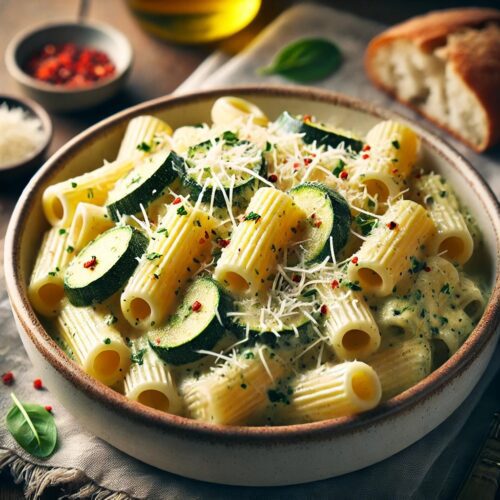If you had asked me a few years ago what I thought of ginger, I’d probably have said, “Great in cookies, weird in tea.” That was before I stumbled on a little trick that completely transformed how I use it, not just as a spice, but as the starting point for flavor in my cooking.
It wasn’t something I read online or picked up from a viral recipe video. It started with a quiet moment in my kitchen, on a cold morning, while I was trying to warm up with something other than coffee.
I grated a bit of ginger, poured hot water over it, added lemon on a whim… and something clicked. That warm, slightly spicy sip made me feel awake in a way I hadn’t expected.
Now, this “ginger trick” has become second nature. I use it in drinks, in marinades, even in rice. It’s one of those small discoveries that sneaks into your routine and stays there.
Let me walk you through exactly how to do it and how to make it your own.
What Is the Ginger Trick?
It’s really just a simple method of extracting the best from fresh ginger. You grate it, steep it, and use that fragrant base as a starter for drinks, broths, dressings — whatever you’re cooking that day.
The difference between this and, say, powdered ginger in a jar is night and day. Fresh ginger is alive with flavor — warm, sharp, slightly sweet, and a little citrusy. The trick is in how you bring it out without overpowering everything else.

How I Discovered It Actually Works in Cooking, Too
One day I had a bit of the ginger tea left over. Instead of tossing it, I added it to a soy-based marinade I was making for chicken. The result? That subtle ginger note soaked right into the meat, adding this slow burn of flavor that wasn’t overpowering — just… perfect.
Since then, I’ve poured it into:
- Stir-fries (add near the end)
- Warm vinaigrettes (with olive oil, lemon, and a little mustard)
- Steamed rice (swap half the cooking water for this ginger steep)
- Glazes for roasted vegetables
Also read: Ocean Love Colada Recipe: A Tropical Blue Drink That’ll Steal Your Heart
It turns out that when you treat ginger with respect — meaning, don’t boil it into bitterness — it behaves beautifully in both savory and sweet dishes.
Best Ginger Trick Recipe
Ingredients
Equipment
Method
- Use a spoon to scrape the skin off the ginger. Grate it finely.
- Bring the water to a simmer — not a rolling boil.
- Add the grated ginger. Let it steep for 5–10 minutes, uncovered.
- Strain into two mugs. Stir in lemon juice and honey.
- Add a pinch of spice if you want to warm it up a little more.
- Tip: You can drink this warm or cool it and pour over ice. Either way, it wakes you up from the inside out.
Nutrition
Notes
Add cayenne pepper for a spicier kick.
Tried this recipe?
Let us know how it was!Custom Variations (What I Actually Use at Home)
There’s no one “correct” version. Here’s how I mix it up, depending on the season or my mood:
- For a calm evening: Add a sprig of rosemary and a slice of apple to the steep.
- For a cold: Extra ginger + a dash of cayenne + thick slice of lemon.
- For dessert pairings: A drop of vanilla and a little cinnamon.
- For lunch prep: I use the steep to make a miso-ginger salad dressing. Just add rice vinegar and sesame oil.
It’s flexible, forgiving, and frankly a lot of fun to experiment with.
Gear I Use That Makes a Difference (Affiliate Link Ideas)
Want to make this part of your routine? A few simple tools help:
- Microplane grater – Gets fine ginger shreds with no waste.
- Fine mesh strainer – Absolutely essential if you don’t like bits floating around.
- Small saucepan with spout – Makes pouring into mugs easier.
- Glass carafe – I make a big batch and store it in the fridge for up to 3 days.
Storage Tips (So You Can Always Have Ginger Ready)
If you want to keep this habit going, prep ahead. Here’s what I do:
- Buy ginger in bulk, peel it all, and freeze in 1-inch chunks. You can grate it straight from frozen.
- Make a big batch of steep, refrigerate it, and reheat gently — or drink it cold.
- Pour extra into an ice tray, freeze, and drop into smoothies or soups.
What Pairs Well With Ginger Tea?
I usually enjoy mine mid-morning or after lunch. But it pairs surprisingly well with food. Some favorites:
- Grilled fish with citrus marinade
- Cold soba noodles with sesame dressing
- Mango or pineapple salad
- Light lemon cookies or dark chocolate squares
Real Questions I’ve Gotten About It
Q: Can I just use powdered ginger?
A: Not for this. The powdered stuff is good for baking, but for steeping? It’s harsh and flat.
Q: How spicy is it?
A: It depends on how long you steep and how much you use. Start small — you can always add more.
Q: Is this like ginger tea?
A: Kind of, but better. Ginger tea bags can be dull. This is fresh and fragrant, and you control the flavor.
Q: Can I give it to kids?
A: Sure — just keep it mild and skip the cayenne. My niece drinks it with a little orange juice mixed in!
Final Thoughts
This isn’t a superfood trend or a “hack.” It’s just one of those old, almost-forgotten tricks that works its way into your daily rhythm and makes everything taste a little better.
Ginger isn’t a miracle ingredient. But when you use it with care, in the right amount, at the right time, it adds something honest to your cooking. A little warmth. A little bite. A little balance.
And sometimes, that’s all a good meal needs.





7 thoughts on “The Ginger Trick You’ll Wish You Tried Sooner”